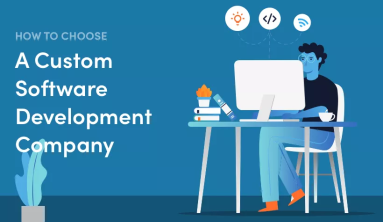What is outsourcing?
Outsourcing is a business practice in which services or job functions are farmed out to a third party. In information technology, an outsourcing initiative with a technology provider can involve a range of operations, from the entirety of the IT function to discrete, easily defined components, such as disaster recovery, network services, software development or QA testing.
Companies may choose to outsource IT services onshore (within their own country), nearshore (to a neighboring country or one in the same time zone), or offshore (to a more distant country). Nearshore and offshore outsourcing have traditionally been pursued to save costs.
Outsourcing benefits and costs
The business case for outsourcing varies by situation, but the benefits of outsourcing often include one or more of the following:
- lower costs (due to economies of scale or lower labor rates)
- increased efficiency
- variable capacity
- increased focus on strategy/core competencies
- access to skills or resources
- increased flexibility to meet changing business and commercial conditions
- accelerated time to market
- lower ongoing investment in internal infrastructure
- access to innovation, intellectual property, and thought leadership
- possible cash influx resulting from transfer of assets to the new provider
Some of the risks of outsourcing include:
- slower turnaround time
- lack of business or domain knowledge
- language and cultural barriers
- time zone differences
- lack of control
Outsourcing services
Business process outsourcing (BPO) is an overarching term for the outsourcing of a specific business process task, such as payroll. BPO is often divided into two categories: back-office BPO, which includes internal business functions such as billing or purchasing, and front-office BPO, which includes customer-related services such as marketing or tech support. Information technology outsourcing (ITO), therefore, is a subset of business process outsourcing.
While most business process outsourcing involves executing standardized processes for a company, knowledge process outsourcing (KPO) involves processes that demand advanced research and analytical, technical and decision-making skills such as pharmaceutical R&D or patent research.
IT outsourcing clearly falls under the domain of the CIO. However, CIOs often will be asked to be involved in — or even oversee — non-ITO business process and knowledge process outsourcing efforts as well. CIOs are tapped not only because they often have developed skill in outsourcing, but also because business and knowledge process work being outsourced often goes hand in hand with IT systems and support.
Outsourcing IT functions
Traditionally, outsourced IT functions have fallen into one of two categories: infrastructure outsourcing and application outsourcing. Infrastructure outsourcing can include service desk capabilities, data center outsourcing, network services, managed security operations, or overall infrastructure management. Application outsourcing may include new application development, legacy system maintenance, testing and QA services, and packaged software implementation and management.
In today’s cloud-enabled world, however, IT outsourcing can also include relationships with providers of software-, infrastructure-, and platforms-as-a-service. In fact, cloud services account for as much as one third of the outsourcing market, a share that is destined to grow. These services are increasingly offered not only by traditional outsourcing providers but by global and niche software vendors or even industrial companies offering technology-enabled services.
IT outsourcing models and pricing
The appropriate model for an IT service is typically determined by the type of service provided. Traditionally, most outsourcing contracts have been billed on a time and materials or fixed price basis. But as outsourcing services have matured from simply basic needs and services to more complex partnerships capable of producing transformation and innovation, contractual approaches have evolved to include managed services and more outcome-based arrangements.
The most common ways to structure an outsourcing engagement include:
Time and materials: As the name suggests, the clients pays the provider based on the time and material used to complete the work. Historically, this approach has been used in long-term application development and maintenance contracts. This model can be appropriate in situations where scope and specifications are difficult to estimate or needs evolve rapidly.
Unit/on-demand pricing: The vendor determines a set rate for a particular level of service, and the client pays based on its usage of that service. For instance, if you’re outsourcing desktop maintenance, the customer might pay a fixed amount per number of desktop users supported. Pay-per-use pricing can deliver productivity gains from day one and makes component cost analysis and adjustments easy. However, it requires an accurate estimate of the demand volume and a commitment for certain minimum transaction volume.
Fixed pricing: The deal price is determined at the start. This model can work well when there are stable and clear requirements, objectives, and scope. Paying a fixed priced for outsourced services can be appealing because it makes costs predictable. It can work out well, but when market pricing goes down over time (as it often does), a fixed price stays fixed. Fixed pricing is also hard on the vendor, which has to meet service levels at a certain price no matter how many resources those services end up requiring.
Variable pricing: The customer pays a fixed price at the low end of a supplier’s provided service, but this method allows for some variance in pricing based on providing higher levels of services.
Cost-plus: The contract is written so that the client pays the supplier for its actual costs, plus a predetermined percentage for profit. Such a pricing plan does not allow for flexibility as business objectives or technologies change, and it provides little incentive for a supplier to perform effectively.
Performance-based pricing: The buyer provides financial incentives that encourage the supplier to perform optimally. Conversely, this type of pricing plan requires suppliers to pay a penalty for unsatisfactory service levels. Performance-based pricing is often used in conjunction with a traditional pricing method, such as time-and-materials or fixed price. This approach can be beneficial when the customers can identify specific investments the vendor could make in order to deliver a higher level of performance. But the key is to ensure that the delivered outcome creates incremental business value for the customer, otherwise they may end up rewarding their vendors for work they should be doing anyway.
Gain-sharing: Pricing is based on the value delivered by the vendor beyond its typical responsibilities but deriving from its expertise and contribution. For example, an automobile manufacturer may pay a service provider based on the number of cars it produces. With this kind of arrangement, the customer and vendor each have skin in the game. Each has money at risk, and each stands to gain a percentage of profits if the supplier’s performance is optimum and meets the buyer’s objectives.
Shared risk/reward: Provider and customer jointly fund the development of new products, solutions, and services with the provider sharing in rewards for a defined period of time. This model encourages the provider to come up with ideas to improve the business and spreads the financial risk between both parties. It also mitigates some risks by sharing them with the vendor. But it requires a greater level of governance to do well.
IT organizations are increasingly looking for partners who can work with them as they embrace agile development and DevOps approaches. “Organizations are rapidly transforming to agile enterprises that require rapid development cycles and close coordination between business, engineering and operations,” says Steve Hall, a partner with sourcing consultancy Information Services Group (ISG). “Global delivery requires a globally distributed agile process to balance the need for speed and current cost pressures.”
Outsourcing and jobs
The term outsourcing is often used interchangeably — and incorrectly — with offshoring, usually by those in a heated debate. But offshoring (or, more accurately, offshore outsourcing) is a subset of outsourcing wherein a company outsources services to a third party in a country other than the one in which the client company is based, typically to take advantage of lower labor costs. This subject continues to be charged politically because unlike domestic outsourcing, in which employees often have the opportunity to keep their jobs and transfer to the outsourcer, offshore outsourcing is more likely to result in layoffs.
Estimates of jobs displaced or jobs created due to offshoring tend to vary widely due to lack of reliable data, which makes it challenging to assess the net effect on IT jobs. In some cases, global companies set up their own captive offshore IT service centers to to reduce costs or access skills that may not result in net job loss but will shift jobs to overseas locations.
Some roles typically offshored include software development, application support and management, maintenance, testing, help desk/technical support, database development or management, and infrastructure support.
In recent years, IT service providers have begun increasing investments in IT delivery centers in the U.S. with North American locations accounting for more the a third of new delivery sites (29 out of a total of 76) established by service providers in 2016, according to a report from Everest Group, an IT and business sourcing consultancy and research firm. Demand for digital transformation–related technologies specifically is driving interest in certain metropolitan areas. Offshore outsourcing providers have also increased their hiring of U.S. IT professionals to gird against potential increased restrictions on the H-1B visas they use to bring offshore workers to the U.S. to work on client sites.
The challenges of outsourcing
Outsourcing is difficult to implement, and the failure rate of outsourcing relationships remains high. Depending on whom you ask, it can be anywhere from 40 to 70 percent. At the heart of the problem is the inherent conflict of interest in any outsourcing arrangement. The client seeks better service, often at lower costs, than it would get doing the work itself. The vendor, however, wants to make a profit. That tension must be managed closely to ensure a successful outcome for both client and vendor.
Another cause of outsourcing failure is the rush to outsource in the absence of a good business case. Outsourcing pursued as a “quick fix” cost-cutting maneuver rather than an investment designed to enhance capabilities, expand globally, increase agility and profitability, or bolster competitive advantage is more likely to disappoint.
Generally speaking, risks increase as the boundaries between client and vendor responsibilities blur and the scope of responsibilities expands. Whatever the type of outsourcing, the relationship will succeed only if both the vendor and the client achieve expected benefits.
Some industry experts point out that increased automation and robotic capabilities may actually eliminate more IT jobs than offshore outsourcing.
Service levels agreements
A service level agreement (SLA) is a contract between an IT services provider and a customer that specifies, usually in measurable terms, what services the vendor will furnish. Service levels are determined at the beginning of any outsourcing relationship and are used to measure and monitor a supplier’s performance.
Often, a customer can charge a vendor a penalty fee if certain SLAs are not met. Used judiciously, that’s an effective way to keep a vendor on the straight and narrow. But no CIO wants to be in the business of penalty-charging and collecting. Bad service from an outsourcing vendor, even at a deep discount, is still bad service, and can lead to greater problems. It’s best to expend energy on finding out why the SLAs are being missed in the first place and working to remedy the situation. Strong SLAs alone will not guarantee success when outsourcing IT services. They’re one of many tools to help manage an IT outsourcing deal.
Outsourcing deal lengths
What’s the best length for a skirt? While the outsourcing industry is not quite as fickle as fashion, the prevailing wisdom about the best length for an outsourcing contract has changed over the years. When outsourcing first emerged as a viable option, long contracts — as many as 10 years in length — were the norm. As some of those initial deals lost their shine, clients and vendors moved to shorter contracts.
As with most questions about outsourcing, the optimal answer depends on what’s being outsourced and why. While decade-long deals have largely gone by the wayside, a transformational outsourcing deal may require more time to reap benefits for both client and vendor. But when outsourcing desktop maintenance or data center support, a shorter relationship may work better. Generally speaking, overly long contracts (more than seven years) should be avoided unless there is a great deal of flexibility built into the contract.
Choosing the right outsourcing provider portfolio
Many years ago, the multi-billion-dollar megadeal for one vendor hit an all-time high, and the big IT service providers of the world couldn’t have been happier. But wholesale outsourcing has proved difficult to manage for many companies. These days, CIOs have embraced the multi-vendor approach, incorporating services from several best-of-breed vendors to meet IT demands. Most major IT services players have done their best to adjust to this trend. In fact, some leading CIOs not only work with a cadre of competing outsourcers, but expect them to meet joint deliverables.
Multisourcing, however, is not without great challenges. The customer must have mature governance and vendor management practices in place. In contract negotiations, CIOs need to spell out that vendors should cooperate and refrain from blaming each other, or else risk losing the job. CIOs need to find qualified staff with financial as well as technical skills to help run a project management office or some other body that can manage the outsourcing portfolio.
The rise of digital transformation has initiated a shift not back to megadeals but away from siloed IT services. As companies embrace new development methodologies and infrastructure choices, many standalone IT service areas no longer make sense. Some IT service providers seek to become one-stop shops for clients through brokerage services or partnership agreements, offering clients a full spectrum of services from best-in-class providers.
How to select a service provider
Selecting a service provider is a difficult decision. But start by realizing that no one outsourcer is going to be an exact fit for your needs. Trade-offs will be necessary.
To make an informed decision, articulate what you want from the outsourcing relationship to extract the most important criteria you seek in a service provider. It’s important to figure this out before soliciting any outsourcers, as they will undoubtedly come in with their own ideas of what’s best for your organization, based largely on their own capabilities and strengths.
Some examples of the questions you’ll need to consider include:
- What’s more important to you: the total amount of savings an outsourcer can provide you or how quickly they can cut your costs?
- Do you want broad capabilities or expertise in a specific area?
- Do you want low, fixed costs or more variable price options?
Once you define and prioritize your needs, you’ll be better able to decide what trade-offs are worth making.
Traditionally, IT organizations have spent six months to a year or more on the IT outsourcing transaction process, finding the right providers and negotiating a suitable contract. But as IT services — and, increasingly, as-a-service — deals have gotten shorter, that lengthy process may no longer make sense. While the selection process still demands diligence, there are some more iterative transaction processes that can reduce the time required to procure IT services.
Outsourcing advisers
Many organizations bring in an outside sourcing consultant or adviser to help figure out requirements and priorities. While third-party expertise can certainly help, it’s important to research the adviser well. Some consultants may have a vested interested in getting you to pursue outsourcing rather than helping you figure out if outsourcing is a good option for your business. A good adviser can help an inexperienced buyer through the vendor-selection process, aiding them in steps like conducting due diligence, choosing providers to participate in the RFP process, creating a model or scoring system for evaluating responses, and making the final decision.
Help can also be found within your organization, from within IT and the business. These people can help figure out your requirements. There is often a reluctance to do this because any hint of an impending outsourcing decision can send shivers throughout IT and the larger organization. But anecdotal evidence suggests that bringing people into the decision-making process earlier rather than later makes for better choices and also creates an openness around the process that goes a long way toward allaying fears.
Negotiating the best outsourcing deal
The advice given above for selecting a provider holds true for negotiating terms with the outsourcer you select. A third-party services provider has one thing in mind when entering negotiations: making the most money while assuming the least amount of risk. Clearly understanding what you want to get out of the relationship and keeping that the focus of negotiations is the job of the buyer. Balancing the risks and benefits for both parties is the goal of the negotiation process, which can get emotional and even contentious. But smart buyers will take the lead in negotiations, prioritizing issues that are important to them, rather than being led around by the outsourcer.
Creating a timeline and completion date for negotiations will help to rein in the negotiation process. Without one, such discussions could go on forever. But if a particular issue needs more time, don’t be a slave to the date. Take a little extra time to work it out.
Finally, don’t take any steps toward transitioning the work to the outsourcer while in negotiations. An outsourcing contract is never a done deal until you sign on the dotted line, and if you begin moving the work to the outsourcer, you will be handing over more power over the negotiating process to them as well.
Outsourcing’s hidden costs
The total amount of an outsourcing contract does not accurately represent the amount of money and other resources a company will spend when it sends IT services out to a third party. Depending on what is outsourced and to whom, studies show that an organization will end up spending at least 10 percent above that figure to set up the deal and manage it over the long haul.
Among the most significant additional expenses associated with outsourcing are:
- the cost of benchmarking and analysis to determine whether outsourcing is the right choice
- the cost of investigating and selecting a vendor
- the cost of transitioning work and knowledge to the outsourcer
- costs resulting from possible layoffs and their associated HR issues
- costs of ongoing staffing and management of the outsourcing relationship
It’s important to consider these hidden costs when making a business case for outsourcing.
The outsourcing transition
Vantage Partners once called the outsourcing transition period — during which the provider’s delivery team gets up to speed on your business, existing capabilities and processes, expectations and organizational culture — the “valley of despair.” During this period, the new team is trying to integrate any transferred employees and assets, begin the process of driving out costs and inefficiencies, while still keeping the lights on. Throughout this period, which can range from several months to a couple of years, productivity very often takes a nosedive.
The problem is, this is also the time when executives on the client side look most avidly for the deal’s promised gains; business unit heads and line managers wonder why IT service levels aren’t improving; and IT workers wonder what their place is in this new mixed-source environment.
IT leaders looking to the outsourcing contract for help on how to deal with the awkward transition period will be disappointed. The best advice is to anticipate that the transition period will be trying, attempt to manage the business side’s expectations, and set up management plans and governance tools to get the organization over the hump.
Outsourcing governance
The success or failure of an outsourcing deal is unknown on the day the contract is inked. Getting the contract right is necessary, but not sufficient for a good outcome. One study found that customers said at least 15 percent of their total outsourcing contract value is at stake when it comes to getting vendor management right. A highly collaborative relationship based on effective contract management and trust can add value to an outsourcing relationship. An acrimonious relationship, however, can detract significantly from the value of the arrangement, the positives degraded by the greater need for monitoring and auditing. In that environment, conflicts frequently escalate and projects don’t get done.
Successful outsourcing is about relationships as much as it is actual IT services or transactions. As a result, outsourcing governance is the single most important factor in determining the success of an outsourcing deal. Without it, carefully negotiated and documented rights in an outsourcing contract run the risk of not being enforced, and the relationship that develops may look nothing like what you envisioned.
Repatriating IT
Repatriating or backsourcing IT work (bringing an outsourced service back in-house) when an outsourcing arrangement is not working — either because there was no good business case for it in the first place or because the business environment changed — is always an option. However, it is not always easy to extricate yourself from an outsourcing relationship, and for that reason many clients dissatisfied with outsourcing results renegotiate and reorganize their contracts and relationships rather than attempt to return to the pre-outsourced state. But, in some cases, bringing IT back in house is the best option, and in those cases it must be handled with care.
Via cio.com






